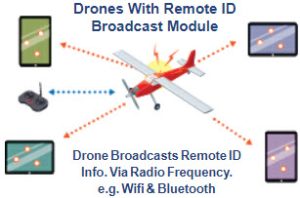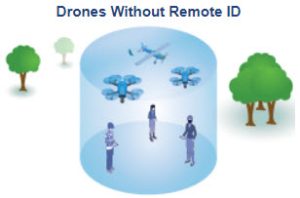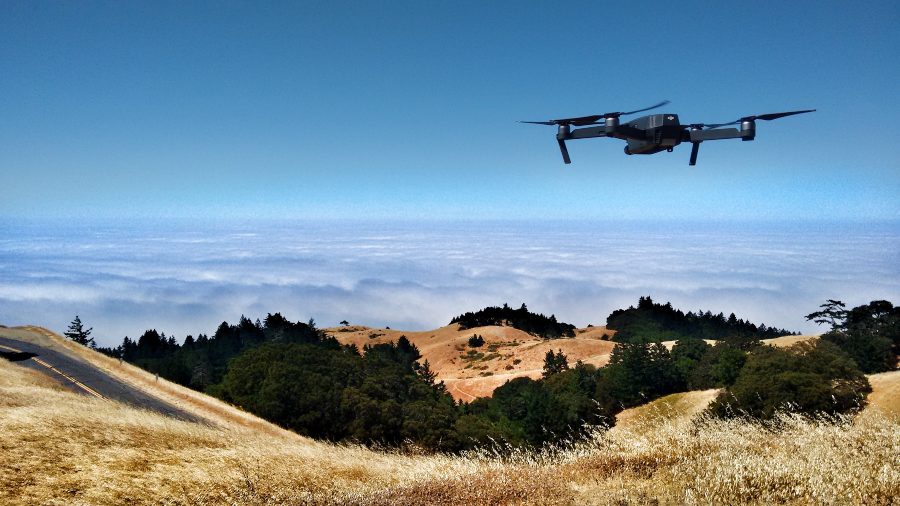Is the Remote ID Rule a Violation of Your Right to Privacy? New Court Ruling Says No
BY Zacc Dukowitz
9 August 2022A recent ruling found that the FAA’s Remote ID rule does not violate a U.S. citizen’s right to privacy under the fourth amendment.
The ruling was made in a case brought by a drone pilot named Tyler Brennan, who runs a drone reseller company named RaceDayQuads.
Brennan sued the FAA over its Remote ID rule last year, claiming that it violated his right to privacy by making him the subject of “constant, warrantless governmental surveillance in violation of the Fourth Amendment.”
In addition to the claim that the rule violated his right to privacy, Brennan’s suit also claimed that the FAA hadn’t followed proper procedures in developing the rule. The court rejected this claim, saying that it lacked merit.
Three-Judge Panel Finds Remote ID Rule Constitutional
Brenann’s argument that the Remote ID rule violated his privacy didn’t hold water for the three-judge panel that heard the case because they didn’t see flying a drone as a private act.
In their decision, the panel found that the Remote ID rule doesn’t violate Brennan’s right to privacy “because drones are virtually always flown in public.”
The judges went on to say:
It is hard to see what could be private about flying a drone in the open air. Activities that require privacy are not typically conducted aloft; in contrast to how we use our homes, cars, and cell phones, people do not ordinarily live in or store private objects or information in their drones.
– From the decision
After the ruling, AUVSI issued a statement in support of the ruling, in which they stated:
The final Remote ID Rule is absolutely necessary for the continued expansion of drone operations . . . AUVSI commends the United States Court of Appeals for the District of Columbia Circuit for upholding FAA’s Remote ID rule. We look forward to continued implementation of the rule and will continue to successfully advocate for a federal regulatory framework that unlocks scalable, secure and sustainable commercial drone operations that benefit the public and businesses.
– AUVSI statement
Past Remote ID Controversy—Including Privacy Concerns
When the first version of the Remote ID rule came out it was the cause of a lot of agitation and criticism in the drone industry, in part because the FAA seemed to be creating a system that would require paid subscriptions to private companies for compliance.
After blowback, the FAA revised the rule, creating a final version that was more acceptable to many in the industry.
But we should note that Brennan isn’t alone in feeling that the final version of the rule has negative implications for privacy.
[Related read: What Is a Remote ID Module? A Complete Guide to FAA-Compliant Remote ID Broadcast Modules]
Back in early January of 2021, when the final version of the rule was gaining in popularity, drone delivery company Wing had privacy concerns about it.
This [rule] creates barriers to compliance and will have unintended negative privacy impacts for businesses and consumers . . . an observer tracking a drone can infer sensitive information about specific users, including where they visit, spend time, and live and where customers receive packages from and when.
– Wing statement
And it’s true.
After the rule goes into effect in September of next year, the location of anyone flying a drone will be hypothetically available to whomever wishes to find it.
That’s worth repeating. Starting next September, whenever you’re flying a drone, people will be able to know not just where your drone is—they’ll also be able to know exactly where you are.
Note: The information you’ll be required to broadcast under the Remote ID rule is not supposed to be available to anyone but designated authorities. But hypothetically, it could be intercepted by anyone.
What Does the Remote ID Rule Require?
The FAA’s Remote ID rule stipulates that all drone pilots flying a drone that weighs 250 grams (.55 pounds) or more must use technology that identifies the location of both the drone and the pilot while operating, regardless of whether they’re flying for recreational or for commercial purposes.
The Remote ID rule will not go into effect until September 16, 2023.
Message elements that must be transmitted
Whether you’re using a Standard Remote ID Drone or a drone with a remote ID broadcast module, you must transmit the following message elements while you’re flying:
- A unique identifier for the drone;
- The drone’s latitude, longitude, geometric altitude, and velocity;
- An indication of the latitude, longitude, and geometric altitude of control station (standard) or take-off location (broadcast module);
- A time mark; and
- Emergency status (Standard Remote ID Drone only)
Three ways to be compliant
There are three ways that drone pilots can be compliant with the Remote ID rule:
1. Operate a Standard Remote ID Drone

A standard Remote ID drone broadcasts identification and location information about the drone and its control station.
2. Operate a drone with a remote ID broadcast module

A broadcast module is a device that broadcasts identification and location information about the drone and its take-off location in accordance with the remote ID rule’s requirements.
3. Operate without remote ID at a designated location

Drone pilots can fly without remote ID at any FAA-recognized identification areas (FRIAs) sponsored by community-based organizations or educational institutions.





